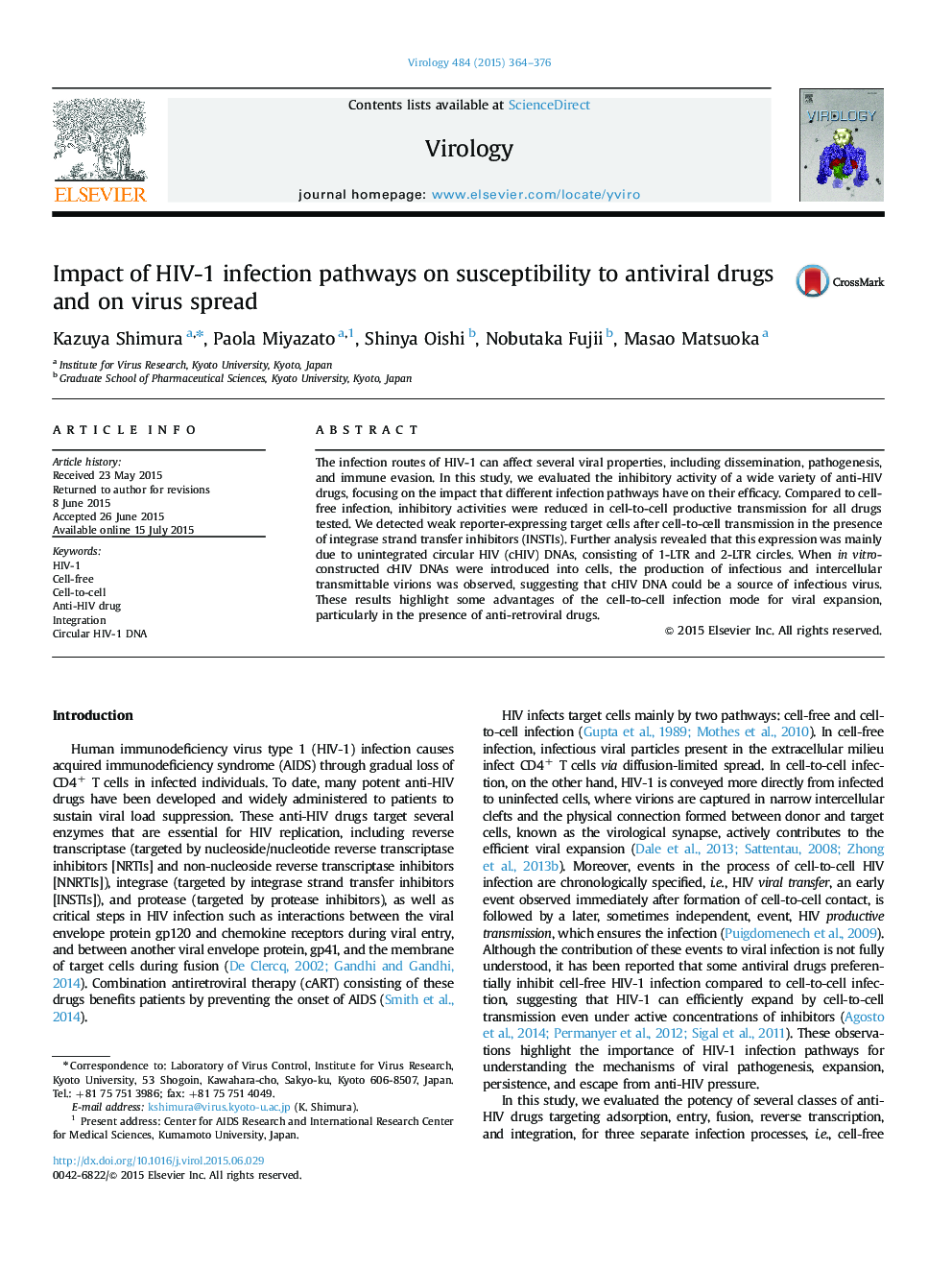| Article ID | Journal | Published Year | Pages | File Type |
|---|---|---|---|---|
| 6139139 | Virology | 2015 | 13 Pages |
â¢Inhibitory activities of anti-HIV drugs were reduced for cell-to-cell infection.â¢Drugs acting on steps prior to RT blocked cell-to-cell viral Gag transfer.â¢Circular HIV DNAs could be a source of infectious virus.â¢Cell-to-cell infection has advantages for HIV expansion under anti-HIV drug pressure.
The infection routes of HIV-1 can affect several viral properties, including dissemination, pathogenesis, and immune evasion. In this study, we evaluated the inhibitory activity of a wide variety of anti-HIV drugs, focusing on the impact that different infection pathways have on their efficacy. Compared to cell-free infection, inhibitory activities were reduced in cell-to-cell productive transmission for all drugs tested. We detected weak reporter-expressing target cells after cell-to-cell transmission in the presence of integrase strand transfer inhibitors (INSTIs). Further analysis revealed that this expression was mainly due to unintegrated circular HIV (cHIV) DNAs, consisting of 1-LTR and 2-LTR circles. When in vitro-constructed cHIV DNAs were introduced into cells, the production of infectious and intercellular transmittable virions was observed, suggesting that cHIV DNA could be a source of infectious virus. These results highlight some advantages of the cell-to-cell infection mode for viral expansion, particularly in the presence of anti-retroviral drugs.
